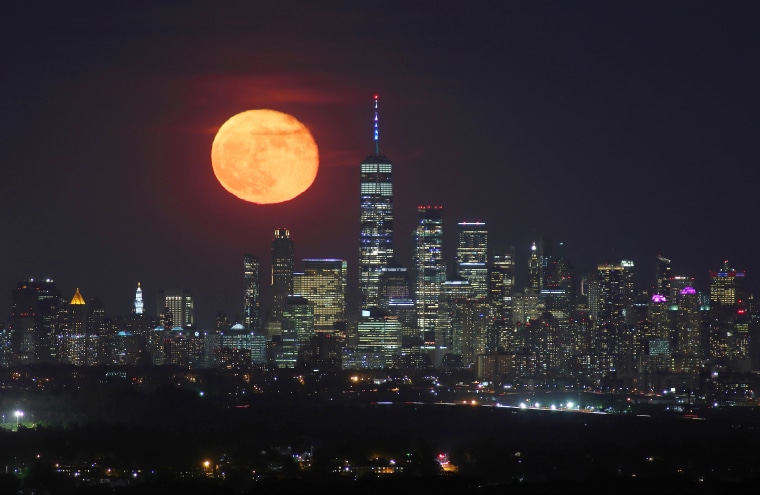A "strawberry" moon is rising.
June's full moon will light up the sky Thursday, marking the last supermoon of the year and capping off a series of recent skywatching events that included a lunar eclipse and a "ring of fire" solar eclipse.
Though it's known as the strawberry moon, the full moon won't actually appear red or pink. Rather, the moniker comes from Algonquin tribes in the northeastern United States to describe the season for harvesting strawberries.
Thursday's full moon will be at peak illumination at 2:40 p.m. ET, but the lunar spectacle won't be visible for several hours, until the moon rises over the horizon in the eastern skies. The moon will subsequently appear full through early Saturday, according to NASA.
The Farmers' Almanac can be used to calculate the precise timing of the moon's rise in a specific area.
This week's event is also a supermoon, which occurs when a full moon is at its closest point to Earth in its elliptical orbit, making the celestial body appear slightly larger and brighter than other full moons.
The definition of a supermoon can vary, though, depending on the threshold used to determine if a full moon is close enough to Earth to qualify. Since June's full moon is farther from Earth than the previous three supermoons, it is considered only a "marginal" supermoon, according to NASA.
The upcoming full moon is also the last supermoon of the year. The next supermoon will occur June 14, 2022.
In addition to being dubbed the strawberry moon, this week's lunar event has a number of different nicknames. In European folklore, June's full moon is sometimes known as the honey moon or the mead moon, to signify the time of year when honey is typically harvested, according to NASA. Elsewhere in Europe, this month's full moon is known as the rose moon, because it coincides with when roses are in bloom.

